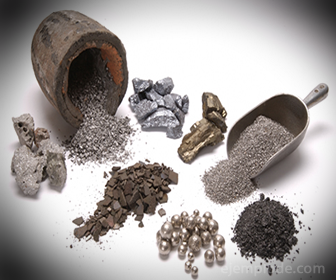Differences Between Inorganic And Organic Chemistry
Chemistry / / July 04, 2021
In General Chemistry, there are two main divisions, which are the Inorganic chemistry and the Organic chemistry. Both have very clear objects of study, and delimited by the Carbon element. The differences between the two divisions will be explained below, so that there is no doubt that they are two different fields.
Denominations
Inorganic Chemistry is called "The chemistry of non-living elements, or minerals."
To Organic Chemistry "The chemistry of living matter", although this name would better correspond to Biochemistry, one of the subdivisions of Organic.
Chemical elements
Inorganic Chemistry studies the properties and chemical interactions between elements such as metals, the no metals, the metalloids, the gases, the radioactive elements, and their combinations such as you go out, the oxisales, the oxides, the hydroxides, the acids.

Organic Chemistry studies the compounds whose main structure is made of Carbon and Hydrogen. Included are Aliphatic hydrocarbons, the aromatic hydrocarbons, alkyl halides,
alcohols, phenols, ethers, esters, carboxylic acids, acid anhydrides, amines, amides, and the macromolecules, Like the polymers, vitamins, lipids, proteins.
Types of Chemical Bonding
In Inorganic Chemistry, the elements are joined mostly by Ionic bonds, although there may also be hydrogen bridge bonds, covalent bonds, and Coordinate Covalent bonds.
In the Organic chemistry, abound covalent bonds, between Carbon and Hydrogen, and also between Carbon and elements such as Oxygen, Nitrogen, Sulfur and Phosphorus. Covalent bonds even become double and triple. This when the octet is not complete between two atoms. To the main bond, which is the sigma bond, another bond is added, the Pi bond. For the triple bond, another complementary Pi bond is formed.
Electrolytic Solutions
In Inorganic Chemistry the phenomenon of electrical conduction in electrolyte solution, by the nature of ionic bonds to generate electrically charged particles while in aqueous solution.
In Organic Chemistry, ionic bonds are scarce, and, since Carbon and Hydrogen chains are long and tightly linked, dissociation in solution is very time consuming and difficult. That is why organic electrolyte solutions are very rare.
Liquid Solutions
In Inorganic Chemistry, if we talk about liquid solutions, the Solvent will always be Water H2OR, since it is the inorganic solvent par excellence, because it integrates very well many compounds such as salts, and alkaline and alkaline-earth elements. Another good inorganic solvent is for example Carbon Dioxide CO2 liquid, but high pressure conditions are required to achieve that state.
On the other hand, if in Organic Chemistry we talk about liquid solutions, there are many ways in which these can be generated. There are a lot of organic solvents, within the groups of Alcohols, Ethers, Hydrocarbons, Aromatic Hydrocarbons. Examples of them are Ethanol, Ethyl Ether, Hexane and Benzene, respectively. Organic solutions are used as improved solvents, or as experimental mixtures to study how the solute is partitioned in the solvent.
Materials
Each branch of chemistry has its study on the useful materials that are generated with the elements involved in it: In The execution of Metallurgy, part of Inorganic Chemistry, generates combinations of Iron with other metals, called Alloys, which have improved properties, as a greater mechanical and thermal resistance.
In Organic Chemistry there is a process called Polymerization, in which a certain organic structure is condensed with many more of the same, generating a long chain, which will be a material with properties that can be hardness, electrical insulation, thermal insulation, elasticity, impermeability, acoustic insulation, or capacity of absorption.
Fields of application
Generalizing a bit, Inorganic Chemistry finds its applications in the branches of Construction, the production of metallic materials, the manufacture of crystals, and ceramic materials, for example.
Organic Chemistry is applied in many other fields, such as Food, Fuels, Cleaning Agents, Water Treatment, Polymerization, the Pharmaceutical industry, Solvents, Adhesives, Paints, thermal insulators, electrical insulators, Raincoats



